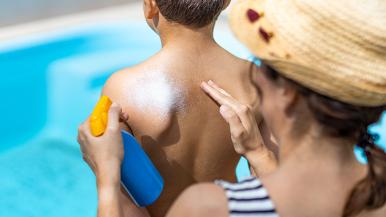Summer is finally here, and we're bursting at the seams to enjoy the sun, swimming, picnics and all that goes with it. But don't forget about seasonal health issues that can put a stop to summer fun. Follow these tried and true preventive safety measures to protect yourself and your family.
Pool safety
Every day, approximately 11 people die from drowning, and it is a leading cause of death among children.
To help prevent this, I highly recommend swim lessons for children.
In addition, all pools should be surrounded by a barrier or fence.
And while enjoying the pool, an adult should be designated as the “water watcher.” Too easily adults may assume that someone is watching the children. To avoid complacency, treat the “water watcher” as an actual title and report off to the next adult with a start and end time and the number of children in the pool.
Sun safety
While sunlight is essential for the synthesis of vitamin D and has beneficial effects on mood, a little goes a long way.
All people, regardless of skin color or type, are subject to the adverse effects of UV radiation and will benefit from sunscreen use. The American Academy of Dermatology recommends a sun protection factor (SPF) of 30 or higher.
The amount to use depends on the size of the individual, but the “teaspoon rule” is a pretty standard recommendation: one teaspoon to the face and neck, two teaspoons total to the front and back torso, one teaspoon to each arm and two teaspoons to each lower extremity.
Apply sunscreen 15 to 30 minutes before sun exposure and repeat every two hours.
Bug safety
While bugs are one of the more annoying aspects of summer, a little knowledge will help in handling those pesky critters.
Like all summer health concerns, prevention is key! DEET has long been considered the gold standard in insect repellents. Per the U.S. Environmental Protection Agency, DEET is “not classifiable as a human carcinogen.” The American Association of Pediatrics and American College of Obstetricians and Gynecology, respectively, state it is safe for children and pregnant women. However, the AAP advises against the use of DEET for children younger than two months. The effectiveness of DEET plateaus at about 30%, but higher concentrations provide longer durations of protection.
If you do get bitten by a bug, typical signs and symptoms are redness, itching, mild pain and mild swelling. Over-the-counter hydrocortisone and antihistamines typically are enough to provide relief. However, there is a chance of developing a secondary bacterial infection. If the bite becomes more swollen and painful or feels hot to the touch, visit one of our many Convenient Care locations to be evaluated. And be aware that lip swelling, facial swelling, vomiting or difficulty breathing can be signs of more emergent reactions which require prompt evaluation, possibly in the emergency department.
Keeping yourself and your family safe takes a little bit of preparation, so load up on sunscreen and bug spray and designate a water watcher — and enjoy a happy and healthy summer!




